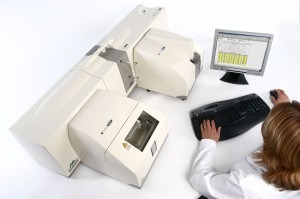
Malvern has published an online application note titled 'Getting a Feel for Soil Texture Using the Mastersizer 2000', which demonstrates the instrument's suitability for soil-texture analysis.
The publication describes a robust methodology and validation technique for the generation of accurate particle-size distributions (PSDs) that quantify the amount of clay, sand and silt in a sample, enabling its classification according to well-established definitions.
Identifying soil for use in industries such as mining, construction and agrochemicals relies on robust characterisation and classification techniques.
Texture is a basic property used to determine if a soil is suited to a particular purpose.
For example, nitrate-retention levels, and therefore appropriate fertiliser usage rates, are related to soil texture.
In the EU, soil designated for agrochemical use must be shown to be in line with EU classification criteria.
The Mastersizer 2000 is suited to soil analysis as it covers the wide particle-size range required, from submicron clay to millimetre-sized sand.
The sensitivity of the system to changes in the distribution is excellent, as demonstrated by validation tests.
Measuring the size distributions of known mixtures of silt and sand highlights the ability of the Mastersizer 2000 to accurately report the relative proportions of each fraction, improving the precision of soil classification.
These advantages have led to the use of the Mastersizer 2000 for monitoring soil conditions across a network of sites in support of agriculture.
Offering rapid, automated operation, the Mastersizer 2000 has standard operating procedure (SOP) driven operation, enabling easy and reliable transfer of analytical procedures between instruments at different sites.
This feature has already facilitated the system's installation at 17 soil-testing laboratories across Poland.




